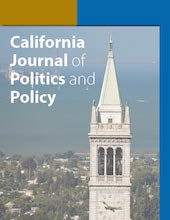Winning from the Center: Frank Bigelow and California's Nonpartisan Primary
In 2012, California first used a nonpartisan “top-two” primary. Early academic studies of the effects statewide have produced mixed results on the key question: does the new law make it possible for more moderate candidates to win? This study focuses on one particular California State Assembly race, District 5, from 2012 to assess the operation of the new law in detail in one same-party runoff. Republicans Frank Bigelow and Rico Oller competed against each other in both rounds; Bigelow, the more moderate Republican, won the general election. This study uses the internal Bigelow campaign polling data (three surveys of 400 voters each) to assess the dynamics of the race, revealing not just voter attitudes towards the candidates but the reasons for Bigelow campaign choices. The results suggest that although little strategic behavior took place in the first round, voters, including Democrats, tended to support the spatially logical candidate in the general election – with the advantage to Bigelow, the candidate closer to the median voter of the district.
